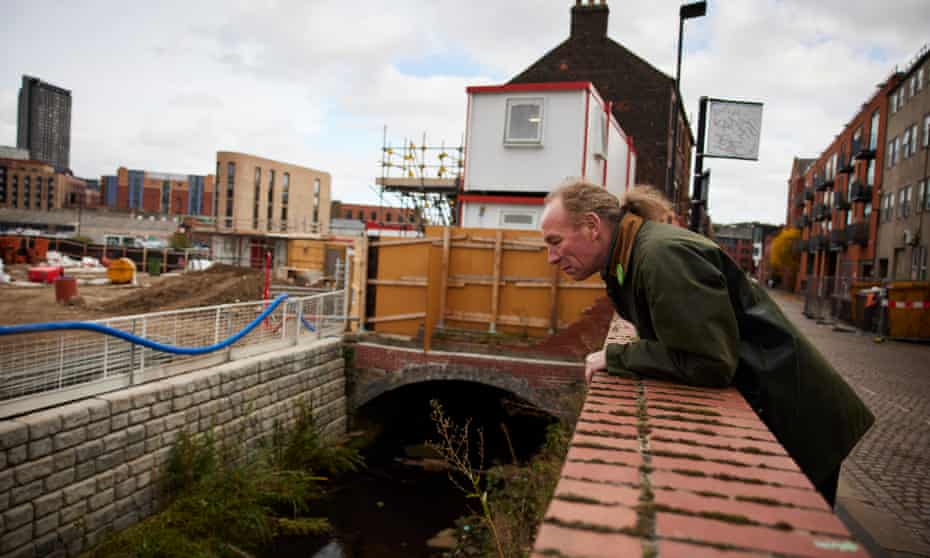‘All we can do is ask’: how flood defences depend on private owners’ cooperation
Environment Agency can do emergency work if life is at risk, but it’s hard to make landowners in England carry out repairs

James Mead was out running in January 2017 when he received a call from a colleague at the Environment Agency. A sinkhole had swallowed up two spaces in the car park at Sheffield’s Decathlon store and he needed to get there pronto.
Mead, on call for the Environment Agency as a senior adviser, legged it down to the city centre to inspect the damage. “It happened overnight but just the previous day there would have been cars parked there. The worst-case scenario was very serious,” he said.
The sinkhole was caused by the collapse of a privately owned culvert, a tunnel carrying the Porter Brook, a small river that was concreted over in Sheffield’s industrial heyday. Mead said Decathlon had been warned it needed to repair the culvert before it caved in.
In January Mead changed jobs and he is now the flood and water manager at Sheffield city council. It is his task to oversee the steel city’s flood defences, including the 36 in private hands that last year received the Environment Agency’s lowest “poor” or “very poor” ratings.
One of those “very poor” defences was the Decathlon culvert, which has since been partially uncovered and shored up with a steel girder as a temporary fix. “It’s still not really up to scratch,” admitted Mead. His powers to force Decathlon to do the work are limited: “Really, all we can do is ask nicely and point out the risk and highlight the consequences.”
Decathlon UK said it repaired the culvert “at considerable cost” after the 2017 sinkhole, before uncovering the river to encourage flora and fauna. Heavy storms in February 2020 caused the collapse of part of the culvert wall, which the company again paid to be repaired.
“The culvert is now safe and we are continuing to monitor this situation,” said Decathlon’s regional property manager, Luke Fillingham. “We’re pleased to say that the river channel has never been blocked and is now in better condition than when we originally purchased the land in December 2010 thanks to the work we have undertaken.” Further repairs are planned in 2022.
The Environment Agency has permissive powers that give it access rights to do emergency work if life is at risk, but ultimately it’s hard to make private landowners stump up for costly permanent improvements. “We don’t have, and neither do the Environment Agency have, the powers to make somebody actually fix something,” Mead said.
Sheffield’s last major flood was in 2007 but there was a near miss in November 2019 when flooding caused havoc downstream in Doncaster and other parts of South Yorkshire. In 1991 a bad flood engulfed Sheffield station, an event commemorated today on platform 4 in the shape of a metre-long log with a plaque that says “debris washdown during the Sheffield station flood 21 December 1991”.
Twenty years on, a flood defence under the station still puts the railway at risk after being given a “very poor” rating in 2019/2020. Most passengers have no idea that the station is built on top of the River Sheaf, which runs in three channels underneath the platforms.
Douglas Johnson, a Green councillor who is now cabinet member for the environment, said it was a hangover from Victorian times when rivers were stinking sewers that should be covered up wherever possible. The thinking is now going in the opposite direction: this week Sheffield city council was given GBP20m from the government’s levelling up fund to uncover sections of the Sheaf as part of a regeneration project of the Castlegate quarter.
Private ownership of these crucial public assets is not ideal, said Johnson. “It would obviously be far better to have things that were public assets owned by the public so that they can be managed in a coherent way.”
